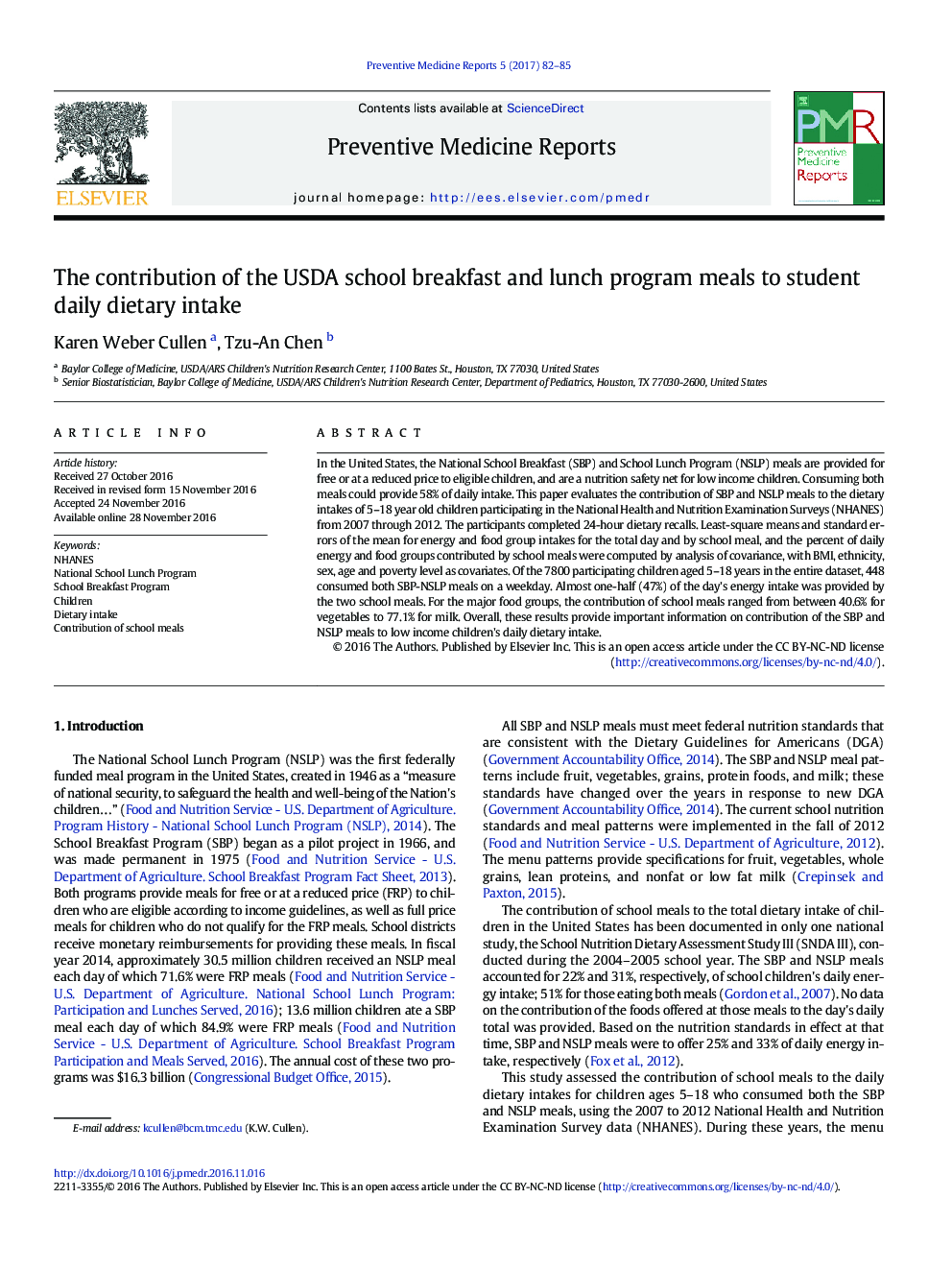| Article ID | Journal | Published Year | Pages | File Type |
|---|---|---|---|---|
| 5723756 | Preventive Medicine Reports | 2017 | 4 Pages |
â¢School meals are a nutrition safety net for low income children.â¢We assessed the contribution of both meals to children's dietary intakes.â¢47% of the day's calorie intake was provided by the two school meals.â¢School meals provided 41% of vegetables to 77% daily milk.
In the United States, the National School Breakfast (SBP) and School Lunch Program (NSLP) meals are provided for free or at a reduced price to eligible children, and are a nutrition safety net for low income children. Consuming both meals could provide 58% of daily intake. This paper evaluates the contribution of SBP and NSLP meals to the dietary intakes of 5-18Â year old children participating in the National Health and Nutrition Examination Surveys (NHANES) from 2007 through 2012. The participants completed 24-hour dietary recalls. Least-square means and standard errors of the mean for energy and food group intakes for the total day and by school meal, and the percent of daily energy and food groups contributed by school meals were computed by analysis of covariance, with BMI, ethnicity, sex, age and poverty level as covariates. Of the 7800 participating children aged 5-18Â years in the entire dataset, 448 consumed both SBP-NSLP meals on a weekday. Almost one-half (47%) of the day's energy intake was provided by the two school meals. For the major food groups, the contribution of school meals ranged from between 40.6% for vegetables to 77.1% for milk. Overall, these results provide important information on contribution of the SBP and NSLP meals to low income children's daily dietary intake.
